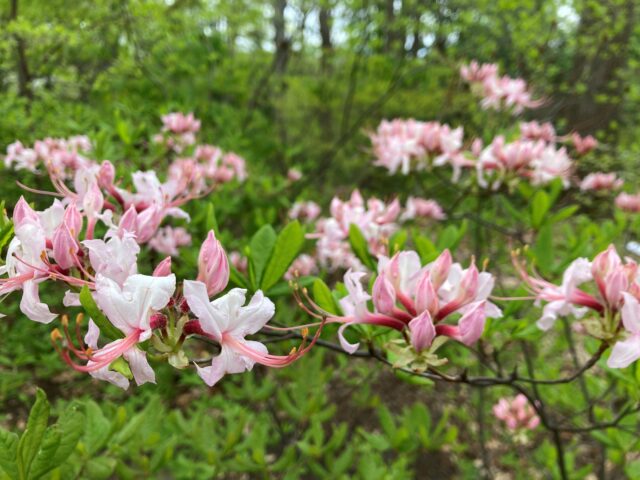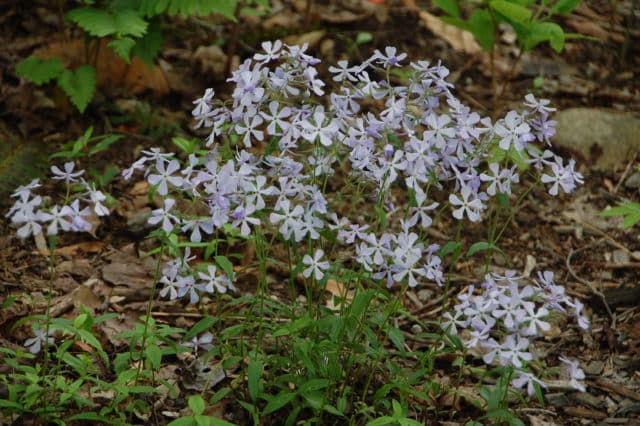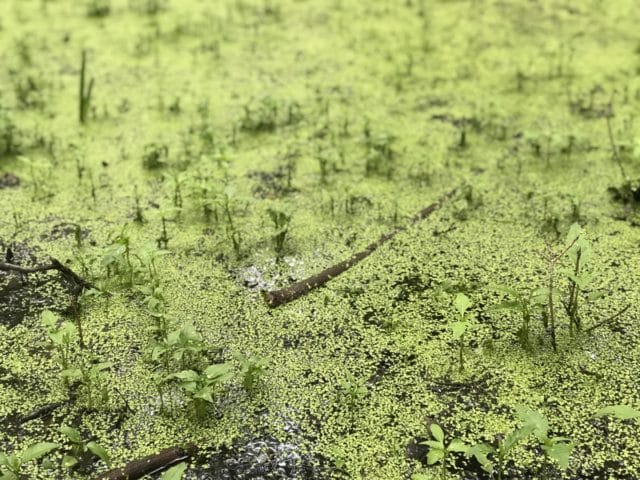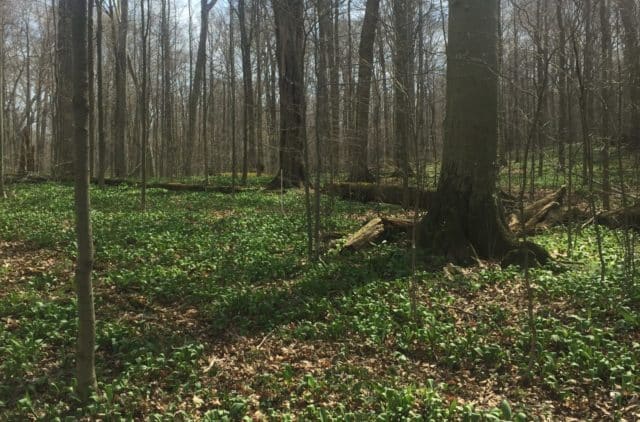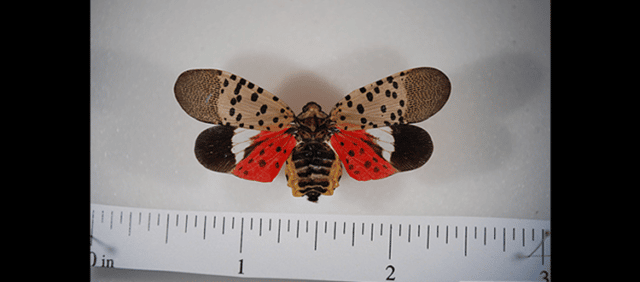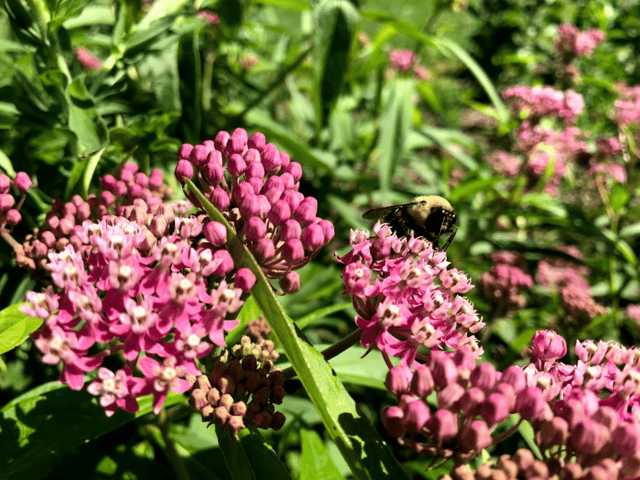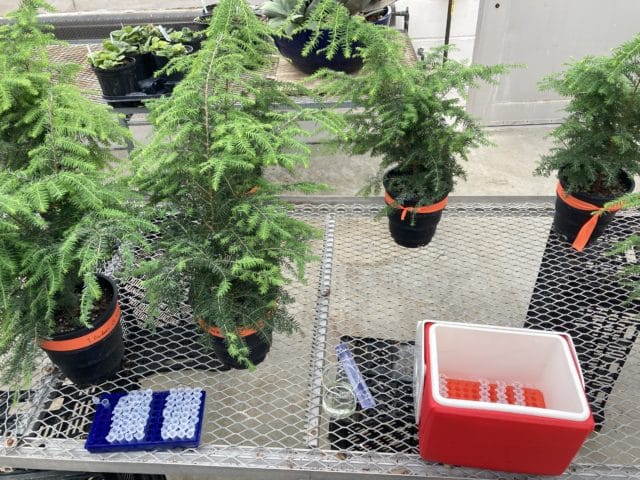
Dr. Chelsea Miller
No man is an island — and the same goes for organisms living in the natural world. It might seem like a plant growing on the forest floor is operating on its own, but it’s not: the other plants, fungi, insects and more that interact with it on a day-to-day basis decide its fate. This interconnectedness is why studying ecology is so interesting: everything exists in a complicated web of interactions. Change one thing, and the effects ripple all throughout the web.
One particularly interesting interaction happens on forest floors across the eastern U.S. Here, many understory plants rely on ants to disperse their seeds, a process called myrmecochory. The seeds of these plants come packaged alongside an elaisosome, a tasty snack packet that both attracts ants and then rewards them with a meal for carrying the seeds away from the parent plant.

Researchers estimate that about one-third of forest understory plants in the eastern U.S. have their seeds dispersed by ants, and most of this work is done by a single type of powerhouse ant, members of the Aphaenogaster genus. But even when forest habitat and Aphaenogaster ants are plentiful, many species of forest understory herbs like spring ephemerals — the fleeting wildflowers that pop up first in spring, before trees leaf out — don’t always seem to fill up their potential range. We even see vastly different ranges for closely related species, like the widespread great white trillium (Trillium grandiflorum) and rather rare pale yellow trillium (Trillium discolor). I wondered: could their relationship with the ants be to blame?
To the forest!
There are at least 30 species of trilliums in eastern North America, and all of them are dispersed mainly by Aphaenogaster ants (among others). These species are categorized into two main groups. In the first, the flowers grow on stalks — these are the pedicellate species. In the other, flowers sprout right out of the leaves (technically, right out of the bracts, leaflike structures) — these are the sessile species. It turns out the pedicellate species are typically more widespread than the sessile species, with some exceptions. Sometimes the range difference is huge: Some live all the way from the southern U.S. into Canada, while others live in only a few specific locations in the southeastern U.S. I wondered if these range-restricted trillium species were so rare because they weren’t able to disperse as effectively — and whether something about their relationship with the ants was at play.
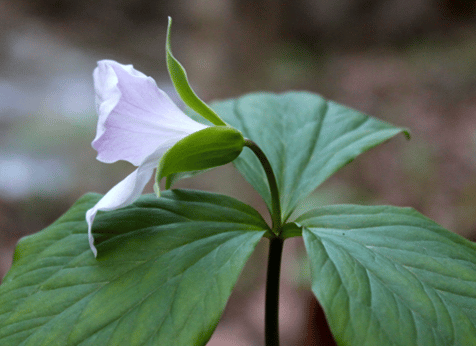
To find out, I spent two wonderful summers in southern Appalachian forests, quietly observing, ants, a half a centimeter long, carrying (or not!) round yellow trillium seeds through the damp leaf litter. Sitting on the forest floor, silent and still for hours at a time, makes one realize how any noise in the forest seems amplified. Two chipmunks wrestling in the leaves yards away sounded like a charging bear. A deer carefully picking its way through the brambles was like a jet plane. And though I routinely ended up covered in mosquito bites, sore and cramped, with soggy knees and backside from crouching on the forest floor all day, those quiet days spent among the trees and woodland creatures will forever be some of my favorite memories.
Back to the science: I watched to see how often, and how far, ants dispersed seeds from both widespread and rare trillium species. I found that the probability of a given seed being dispersed was indeed lower for the rare species, even when the same number of ants were nearby. And I found that ants showed a clear preference for the seeds of the more widespread species.
My colleagues and I confirmed these findings with controlled experiments in the lab. The conclusion was clear: ants weren’t dispersing the rare species as much1.
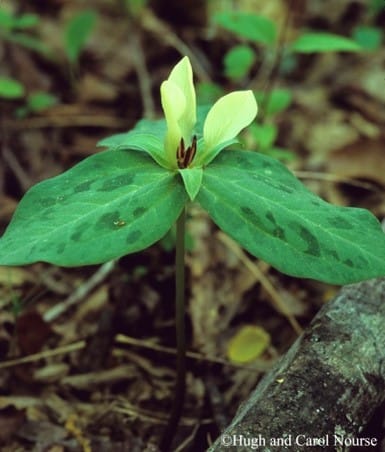
Hugh and Carol Nourse
If you give an ant an elaiosome
This was a fascinating finding, and I wanted to know more. Back in the lab, I analyzed the seeds and elaiosomes of the widespread and rare species to see if there were differences in their chemistry or structures. There were. For one, the seeds the ants preferred had higher elaiosome-seed mass ratios, meaning the seeds themselves were lighter and the ant-snack add-on larger. What’s more, ants preferred elaiosomes with higher concentrations of fatty acids, which are important nutrients for ants.
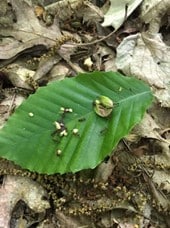
Chelsea Miller, 2016.
While I was exploring the seed chemistry, I also discovered something completely new: There were chemicals in some of the elaiosomes that the ants didn’t like2. Researchers had previously identified chemical compounds that were thought to be attractive to ants, but none that might serve as deterrents. Why would elaiosomes contain chemicals that deter ants if they rely on them for seed dispersal?
My guess was that these range-restricted trilliums, which have less-attractive seeds, might actually benefit from avoiding too much dispersal. Why? It’s possible they rely on specific habitat requirements, like specific soil types or plant communities, that just don’t exist farther away. If that were the case, these plants would benefit from less extensive dispersal away from the suitable habitats.
Zooming out
Before wrapping up my research, I had to check on one more piece of the puzzle: that the rarer, range-restricted trilliums were indeed not occupying the full extent of their potential range, based on general habitat and climate characteristics, compared to their widespread relatives. If this were the case, it would confirm that these rarer trilliums aren’t just limited by something like the climate, but rather by something like microhabitat characteristics or dispersal ability.

Chelsea Miller, 2016.
The differences were stark. Pale yellow trillium (Trillium discolor), a range-restricted sessile species, only occupied 1.1% of its potentially suitable area. In contrast, great white trillium (Trillium grandiflorum), a widespread pedicellate species, occupied 96% of its suitable range.
Looking more closely at each trillium species, I found differences between the characteristics of the rare and widespread species. As I expected, pedicellate trilliums filled more of their potential ranges than sessile trilliums. The more widespread trilliums also had more seeds and, generally, greater seed mass, including the mass of elaiosomes — all the better for ants to disperse, and disperse far and wide3.
In the end, it’s clear that the characteristics of these different trillium species are directly influencing how often and how far ants disperse their seeds, which in turn dictates the size of each species’ range. Whether the range-restricted species are indeed limited by dispersal as an adaptation to a specific microhabitat, or they are simply “stuck” in their respective ranges due to poor dispersal ability, remains to be seen. But, by plucking one small strand of the web, I was able to follow the ripples all the way to the edges, tracing elaiosome to ant and back again, all the way to the distributions of an entire genus of plants.

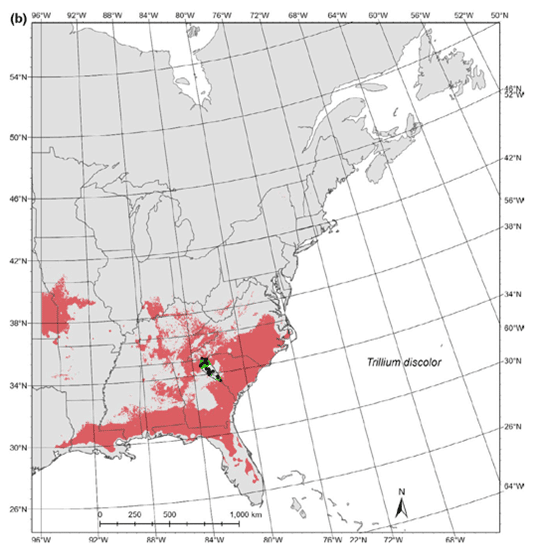
Potential (pink) versus actual (green) ranges of a. T. grandiflorum and b. T. discolor. Miller et al., 2021.
- Miller, C. N., & Kwit, C. (2018). Overall seed dispersal effectiveness is lower in endemic Trillium species than in their widespread congeners. American Journal of Botany, 105(11), 1847-1857.
- Miller, C. N., Whitehead, S. R., & Kwit, C. (2020). Effects of seed morphology and elaiosome chemical composition on attractiveness of five Trillium species to seed‐dispersing ants. Ecology and evolution, 10(6), 2860-2873.
- Miller, C. N., Papeş, M., Schilling, E. E., & Kwit, C. (2021). Reproductive traits explain occupancy of predicted distributions in a genus of eastern North American understory herbs. Diversity and Distributions, 27(8), 1489-1506.
